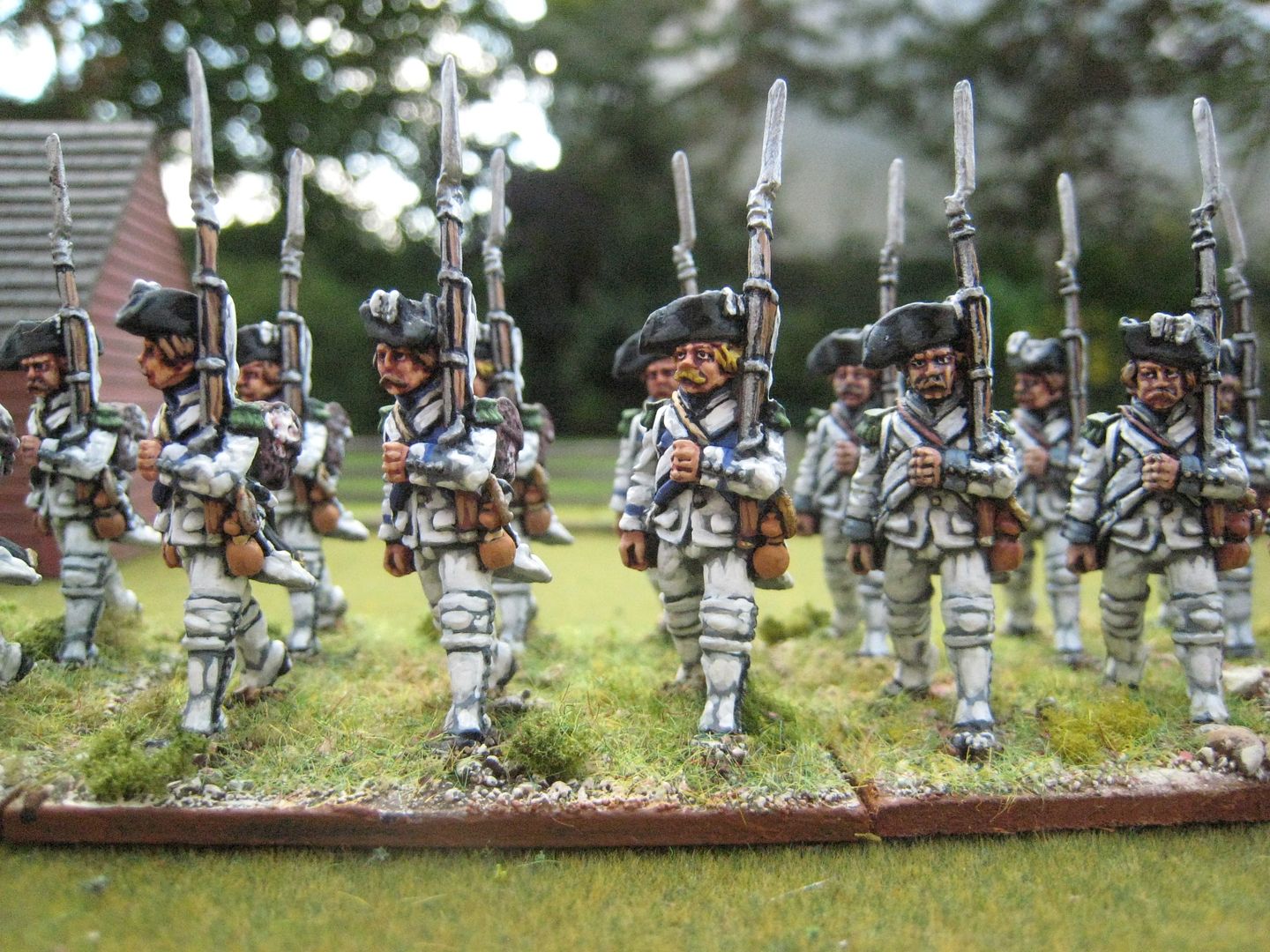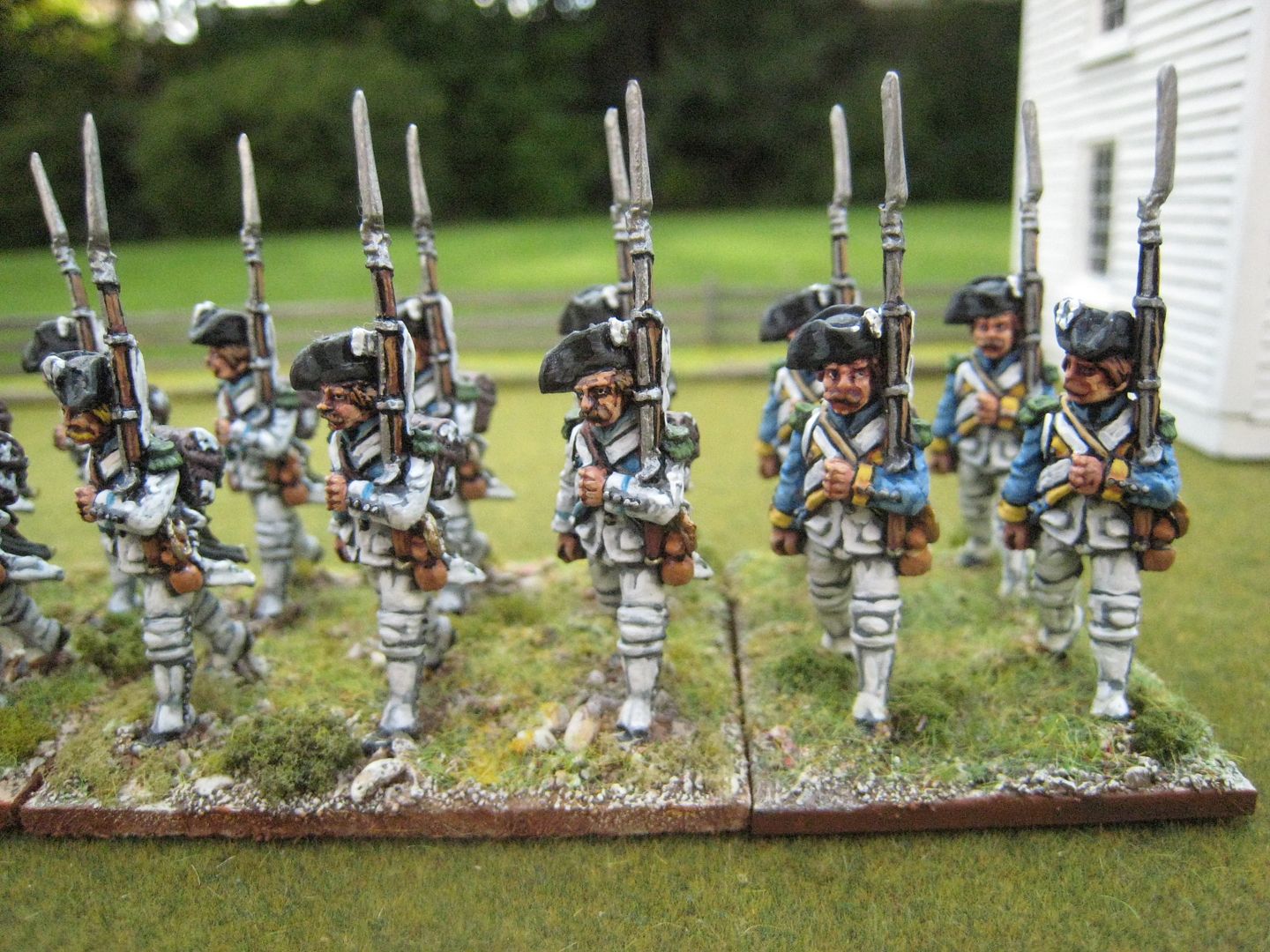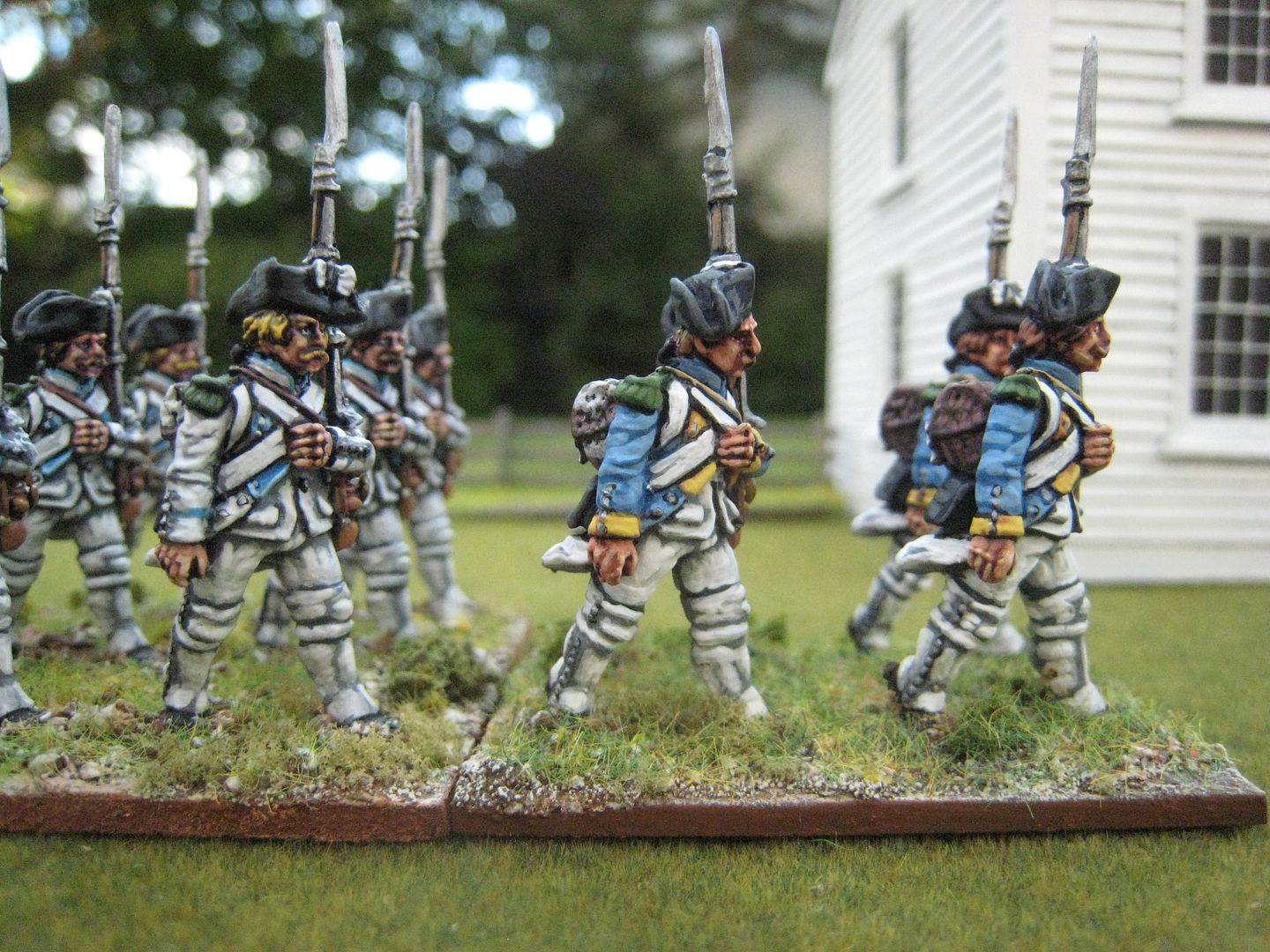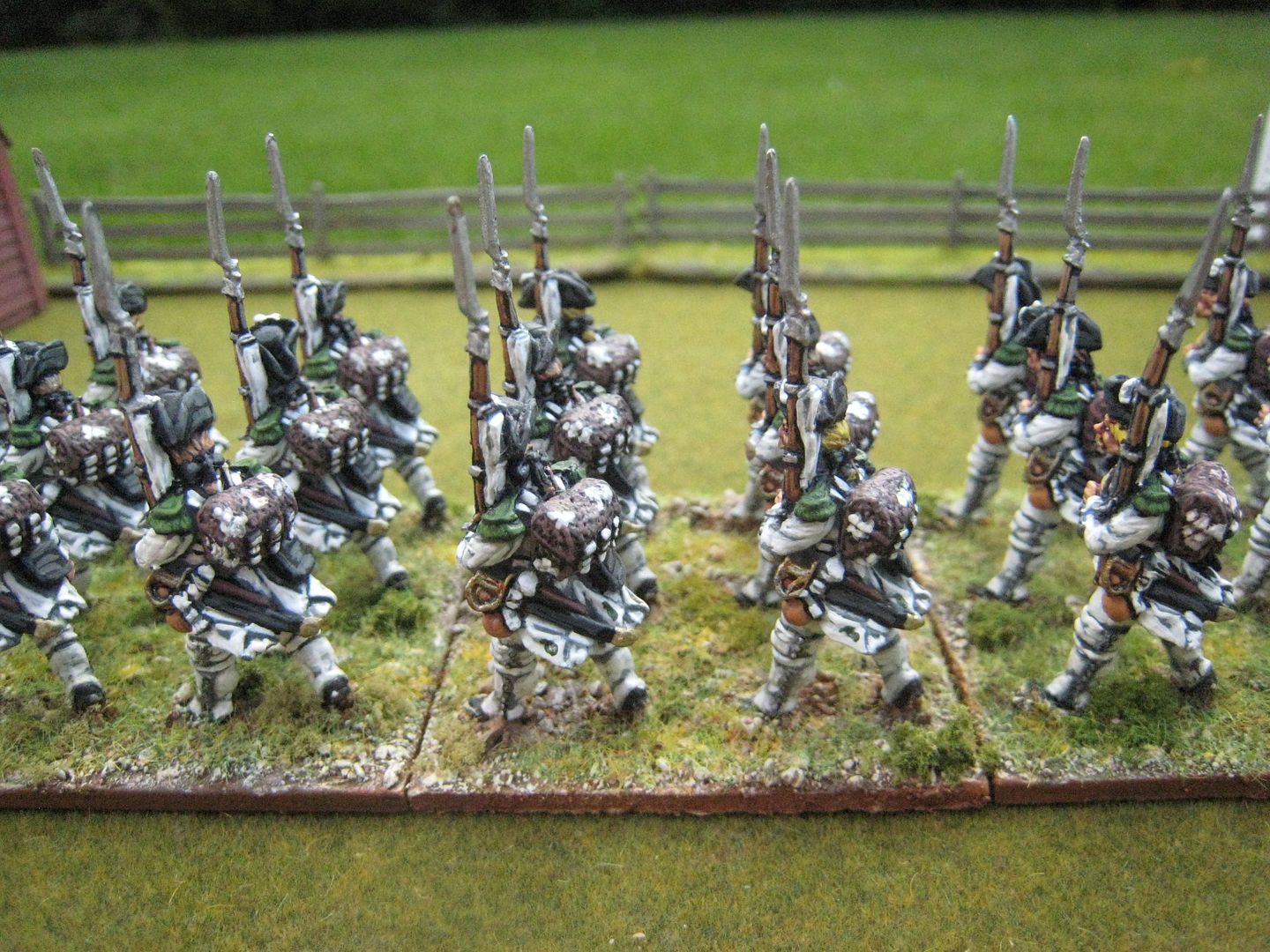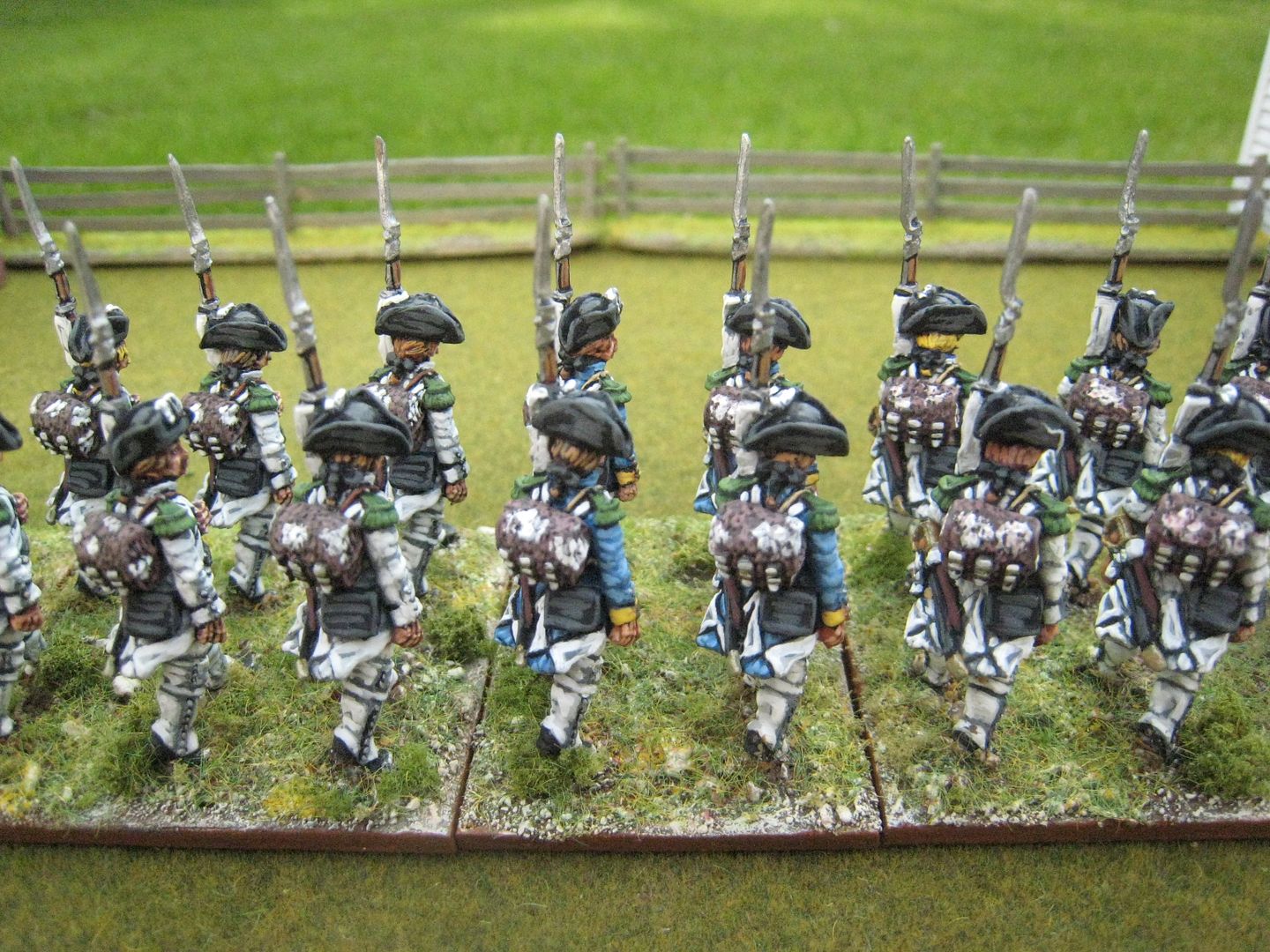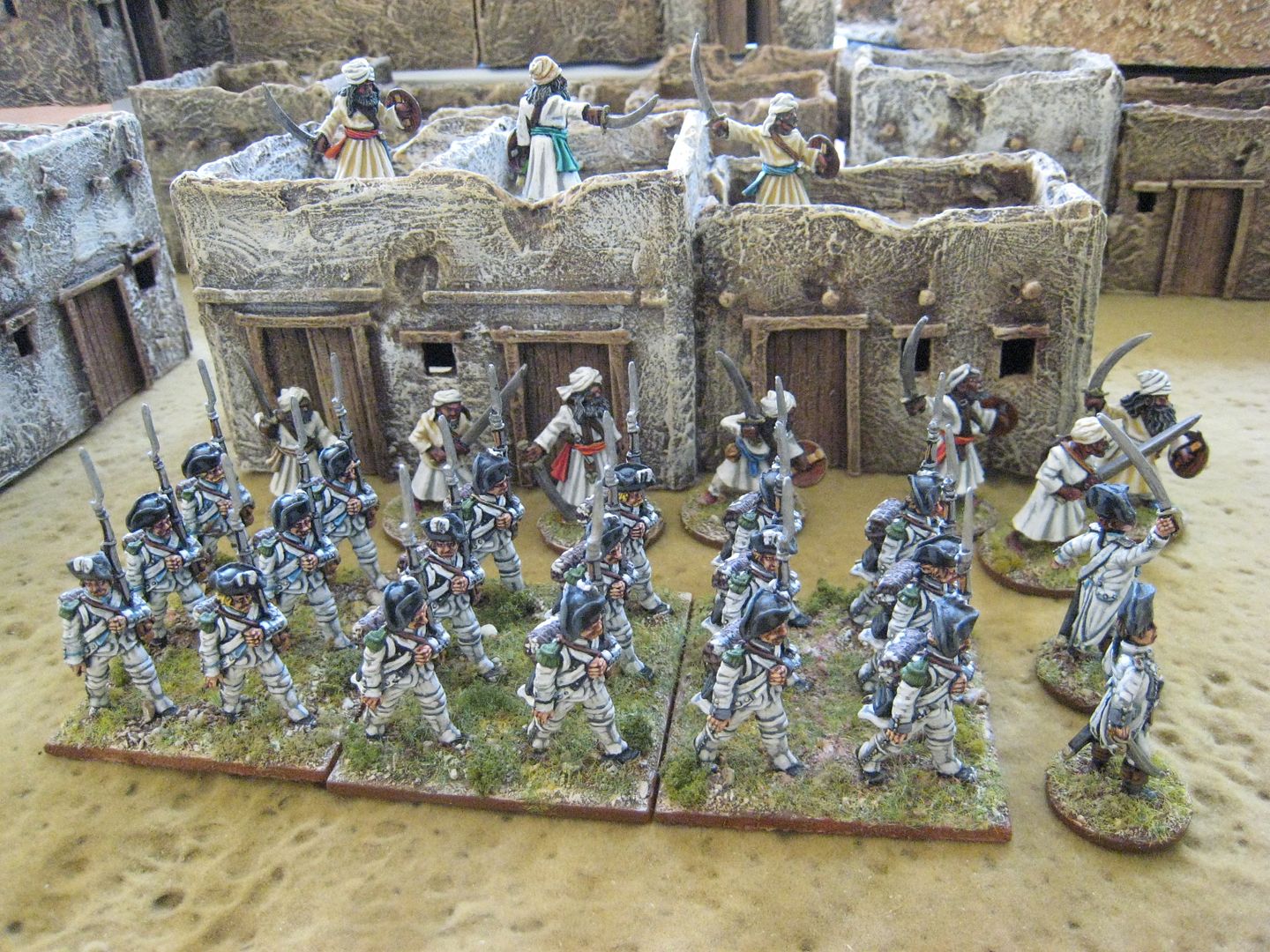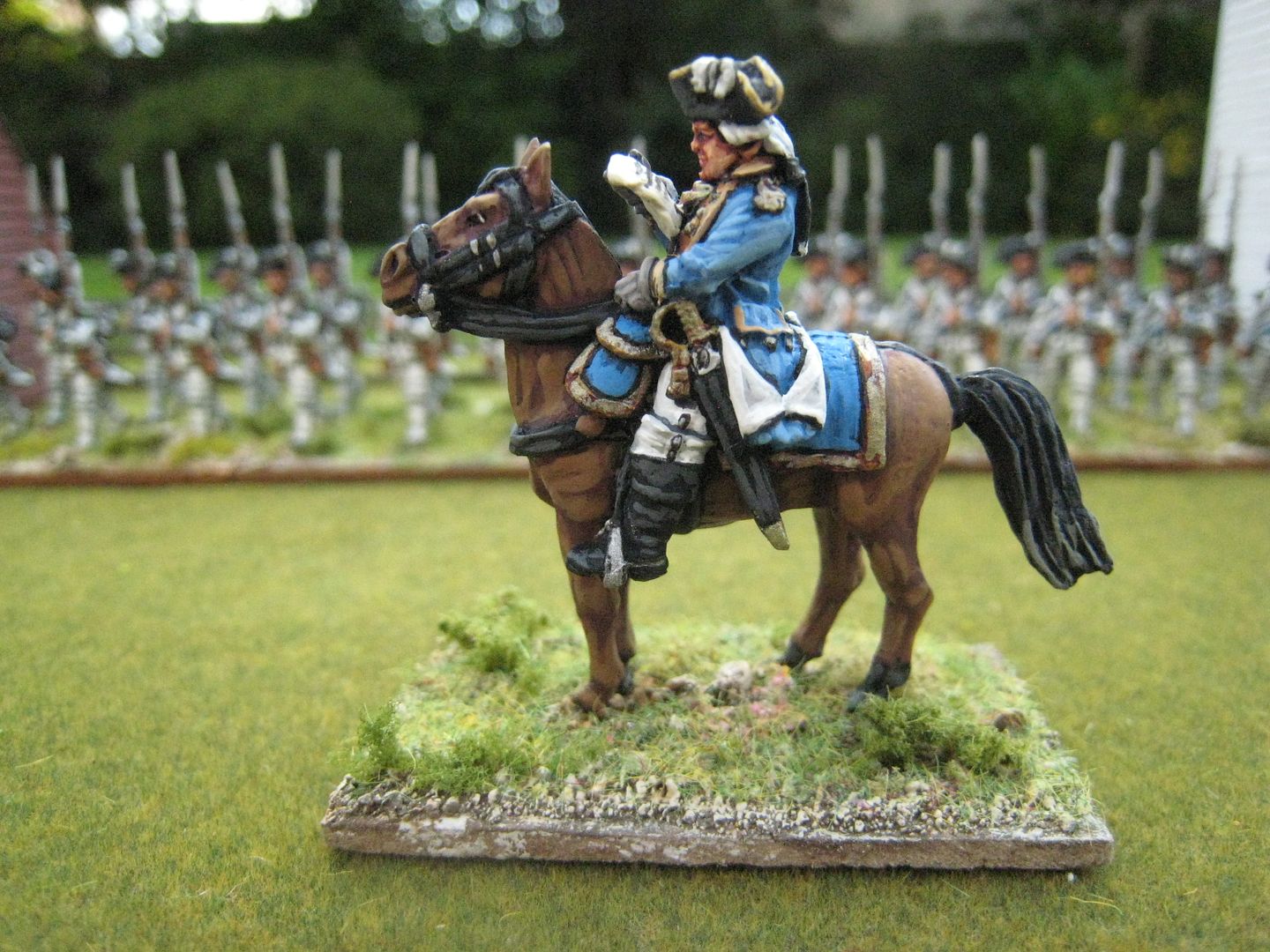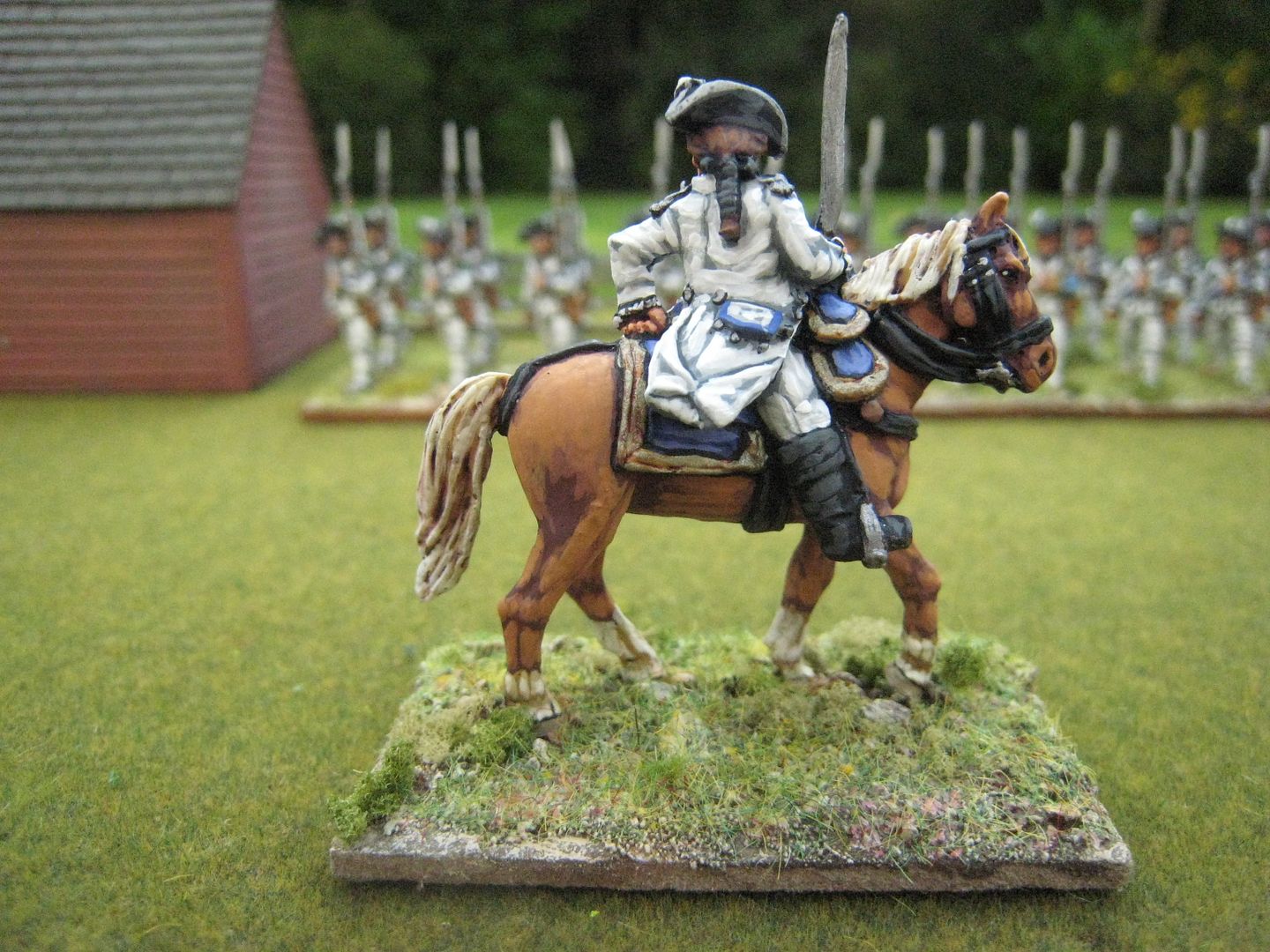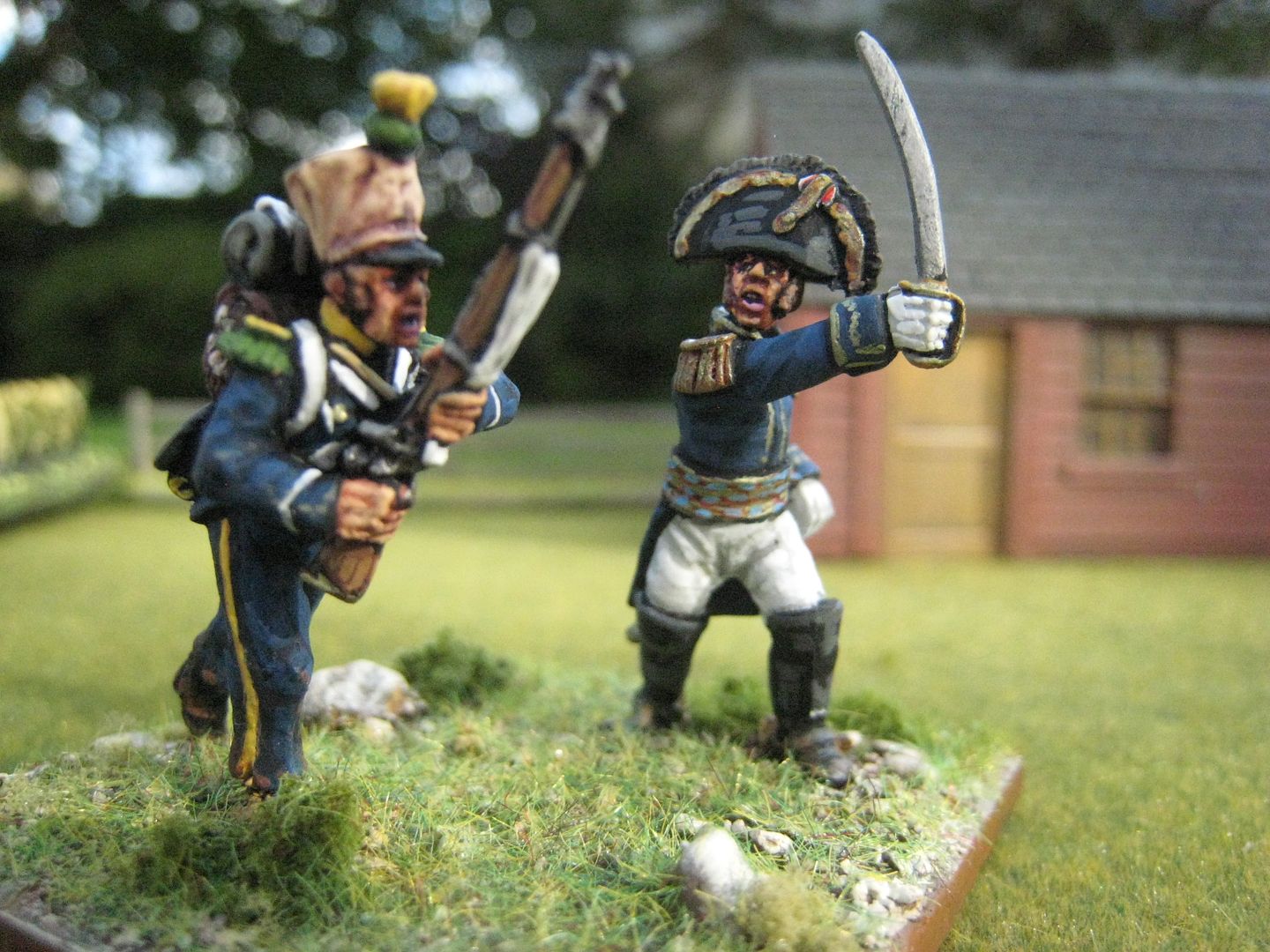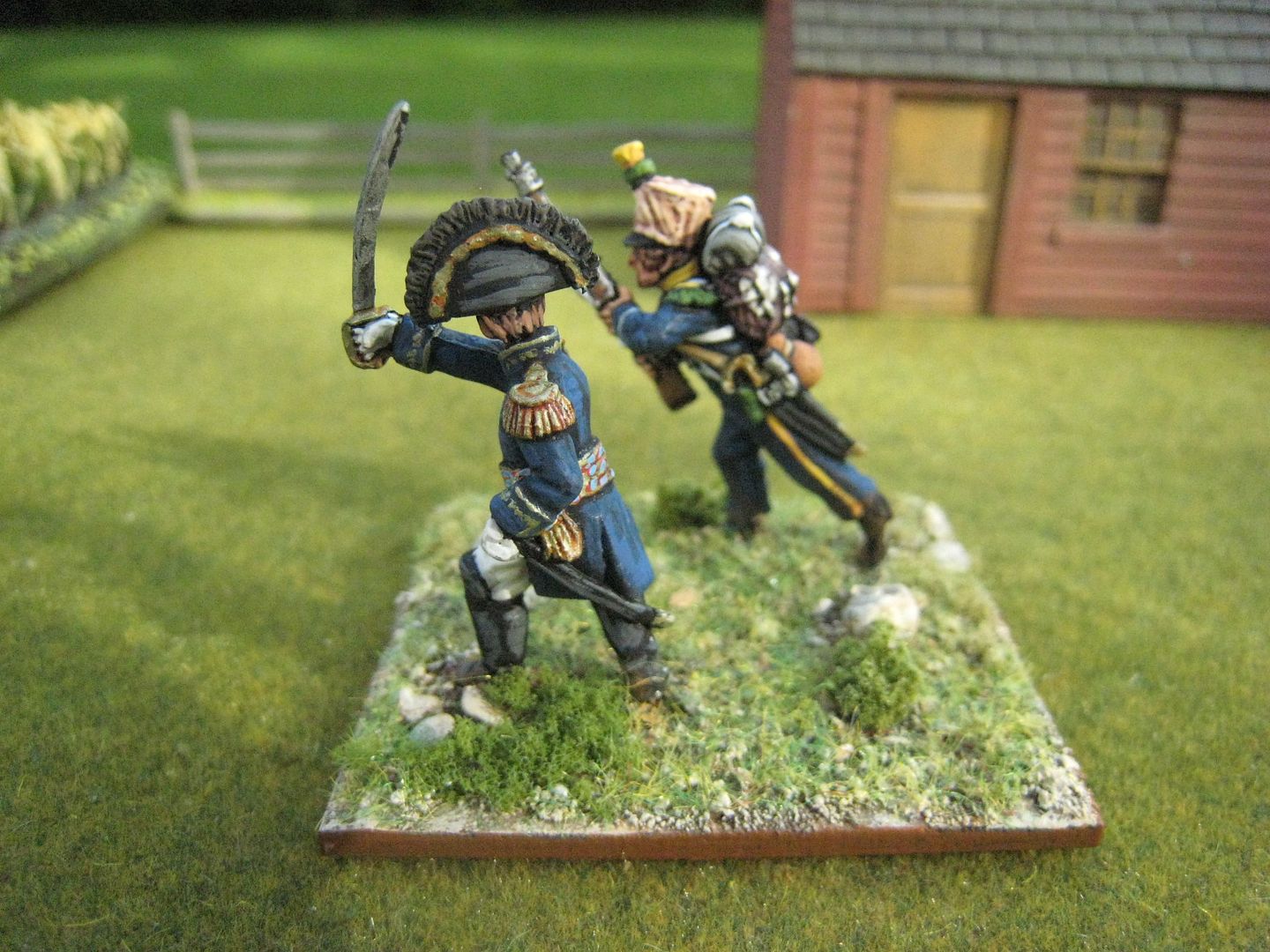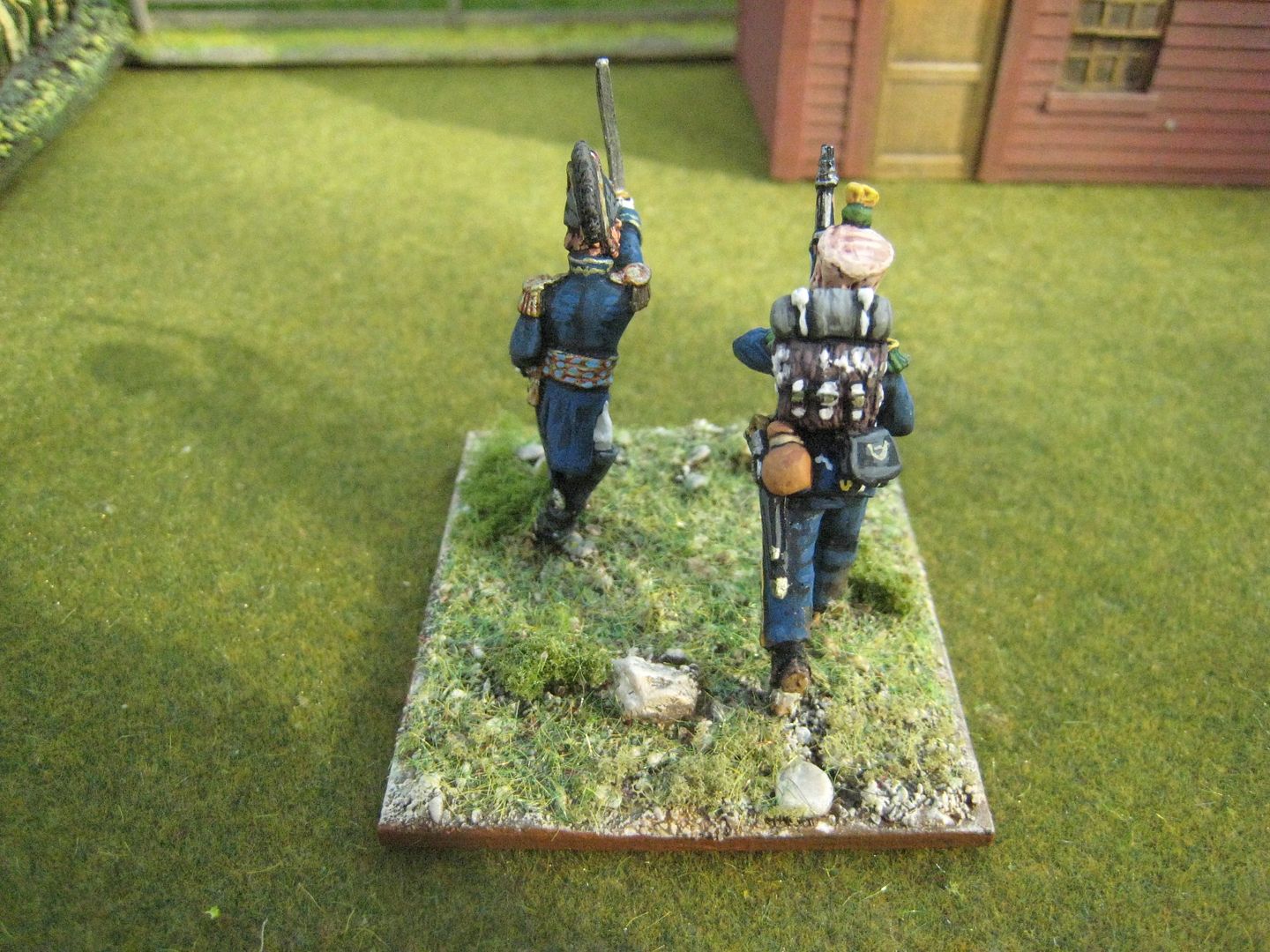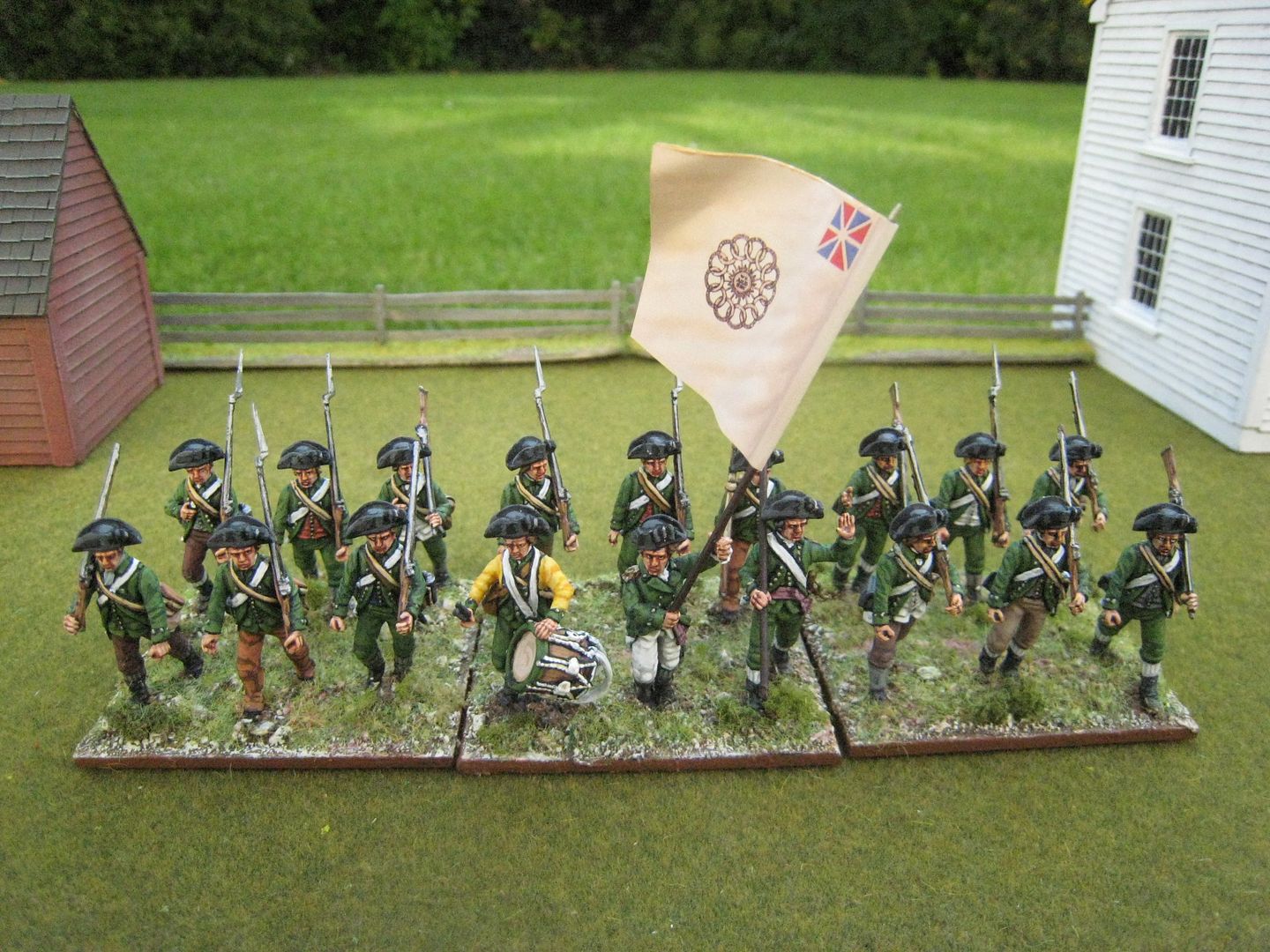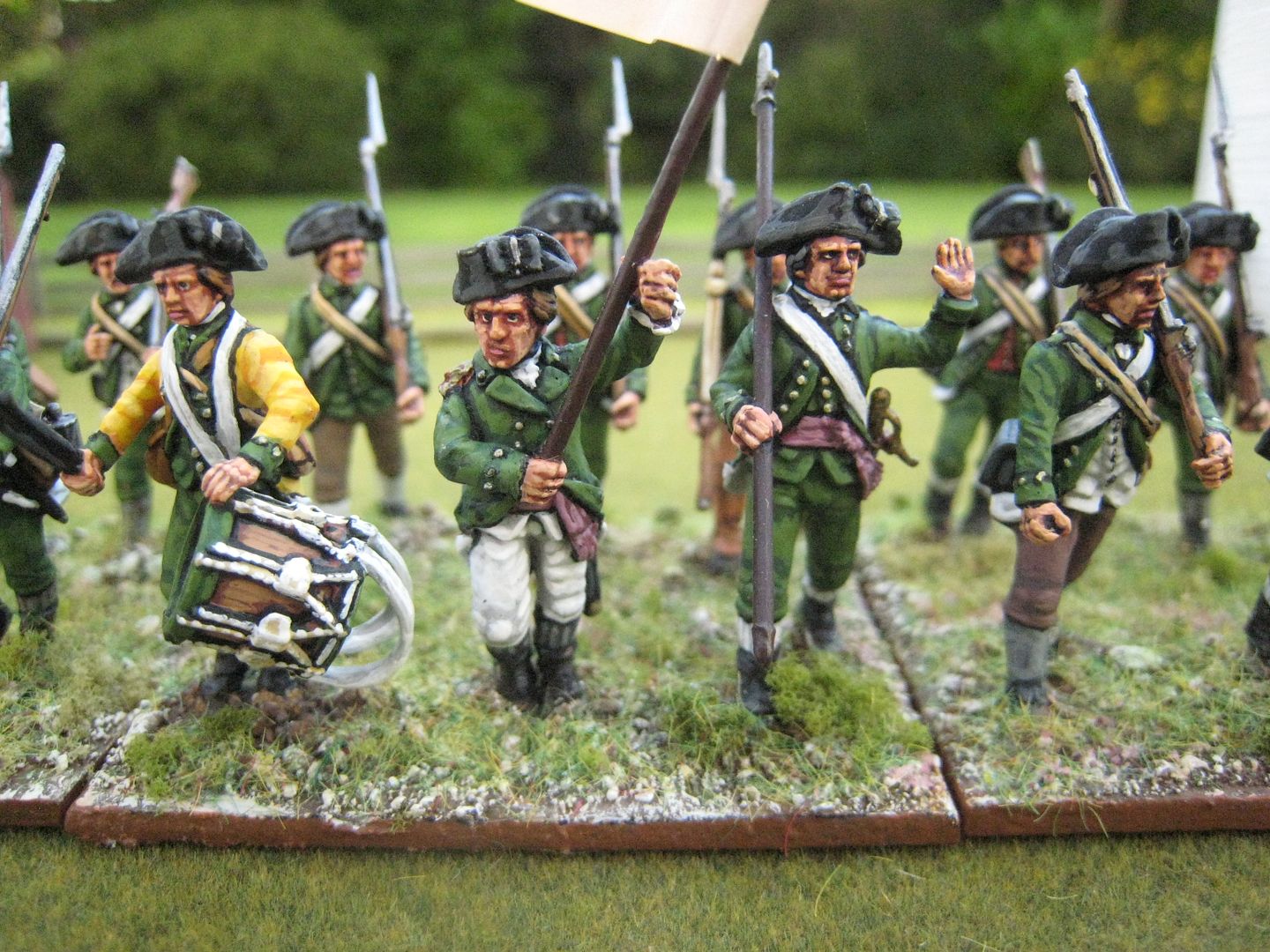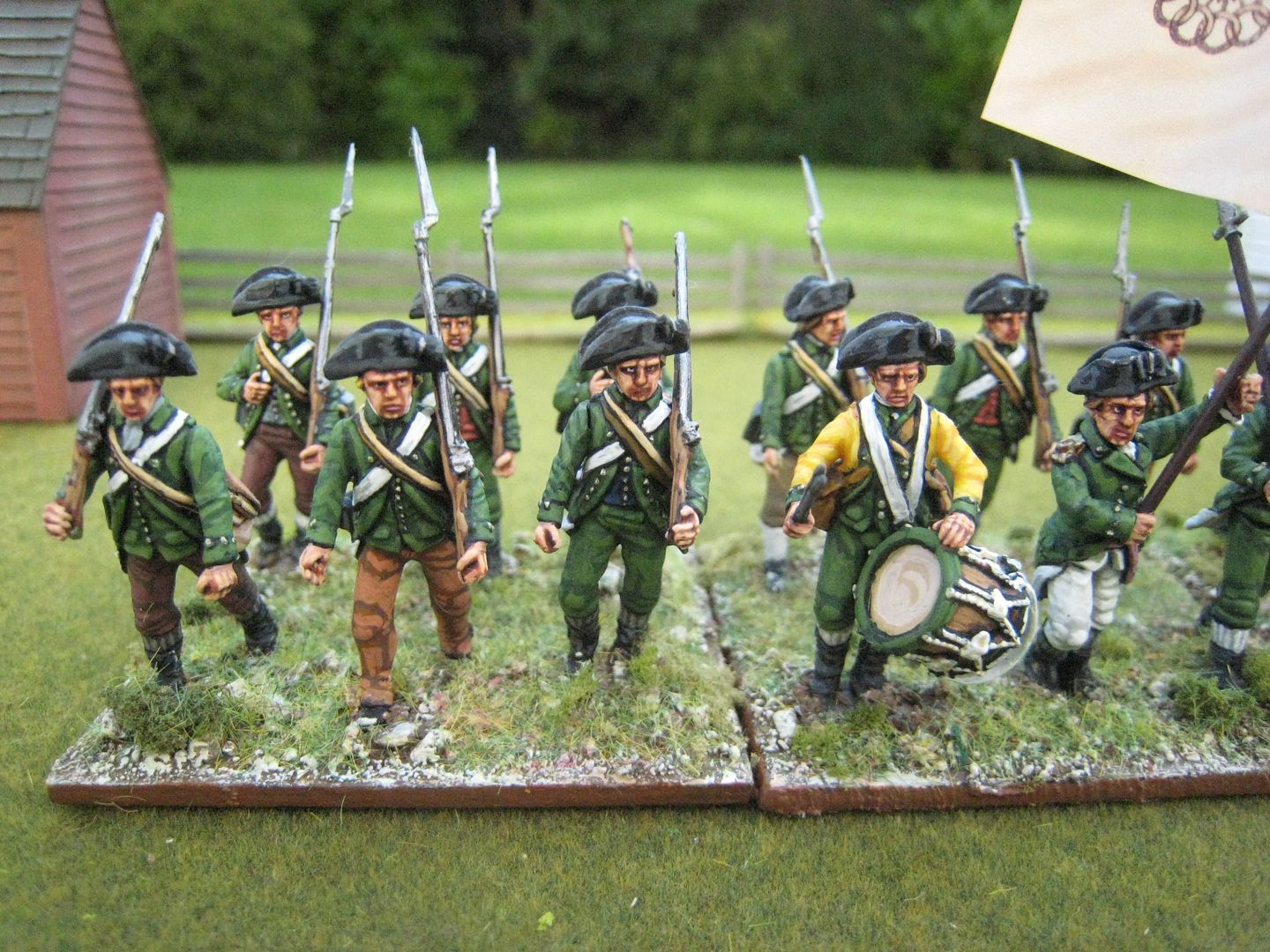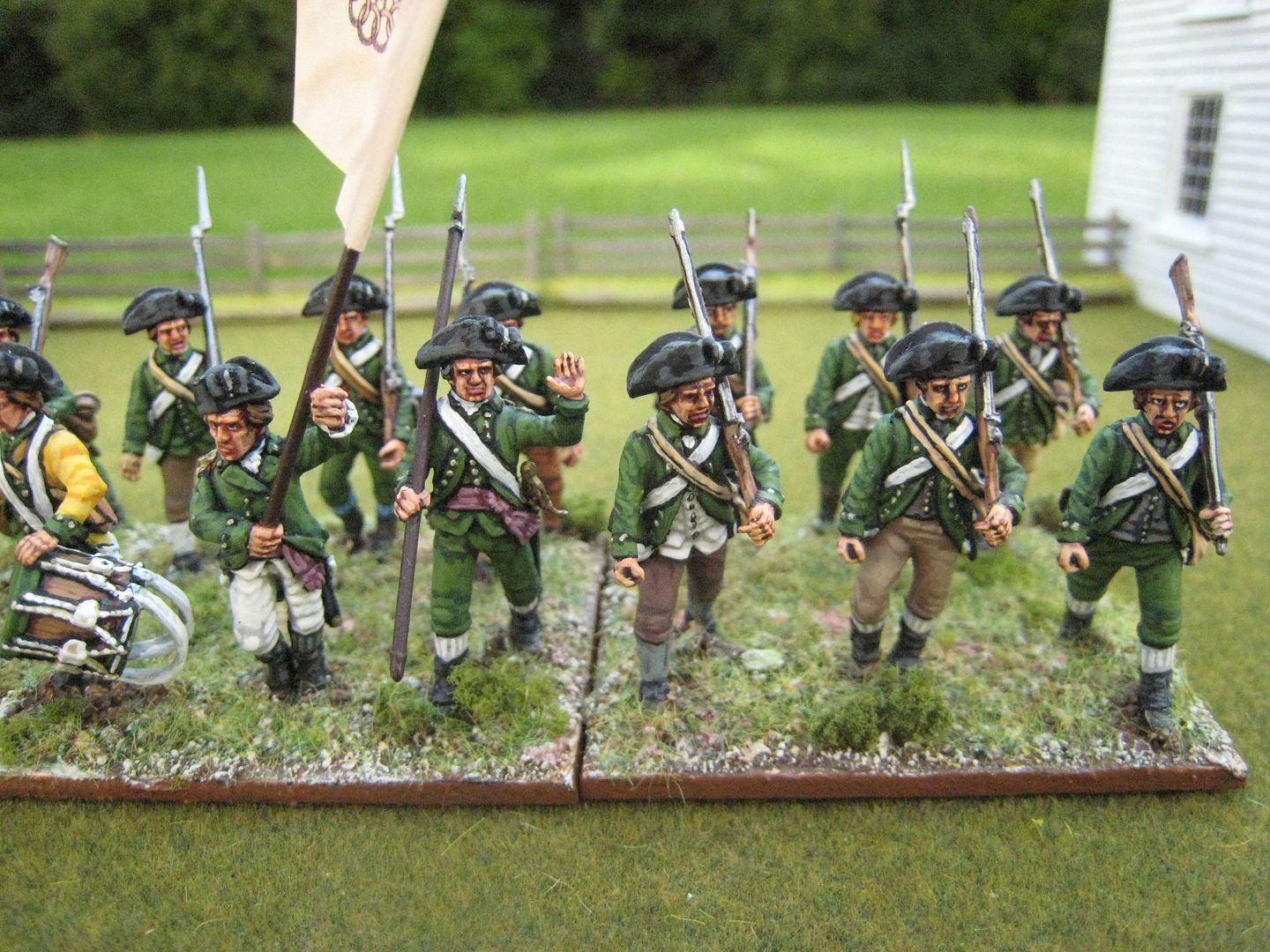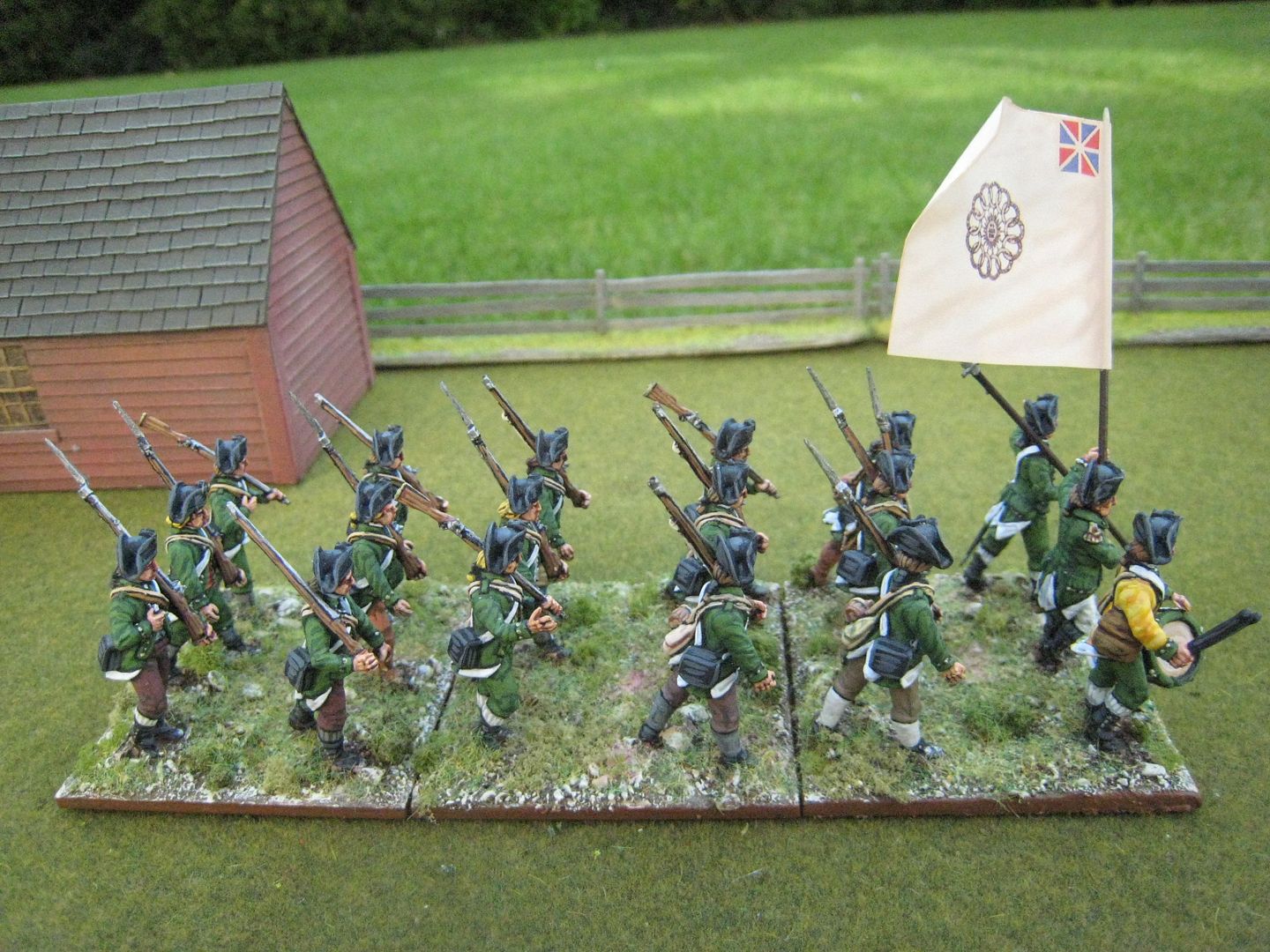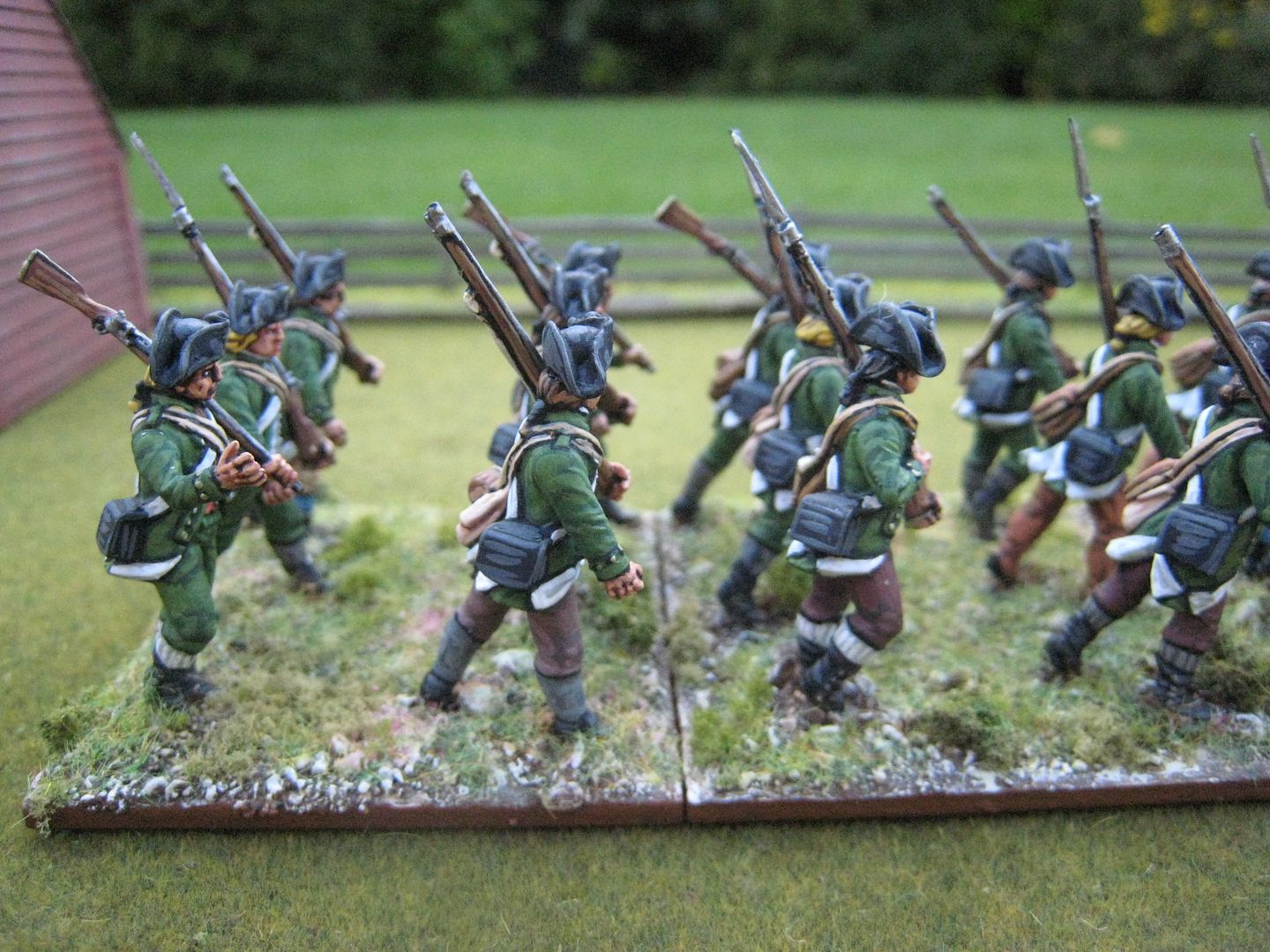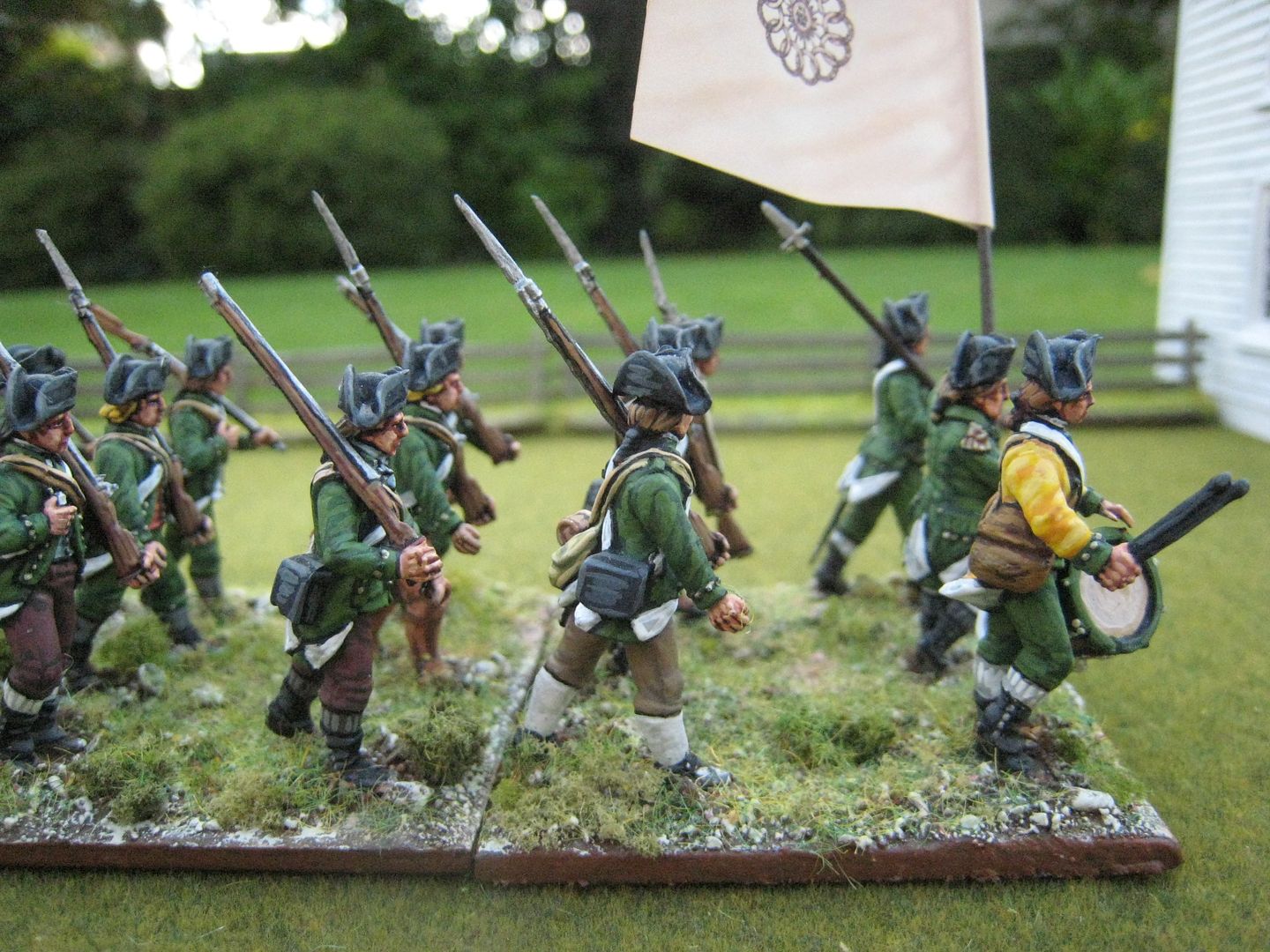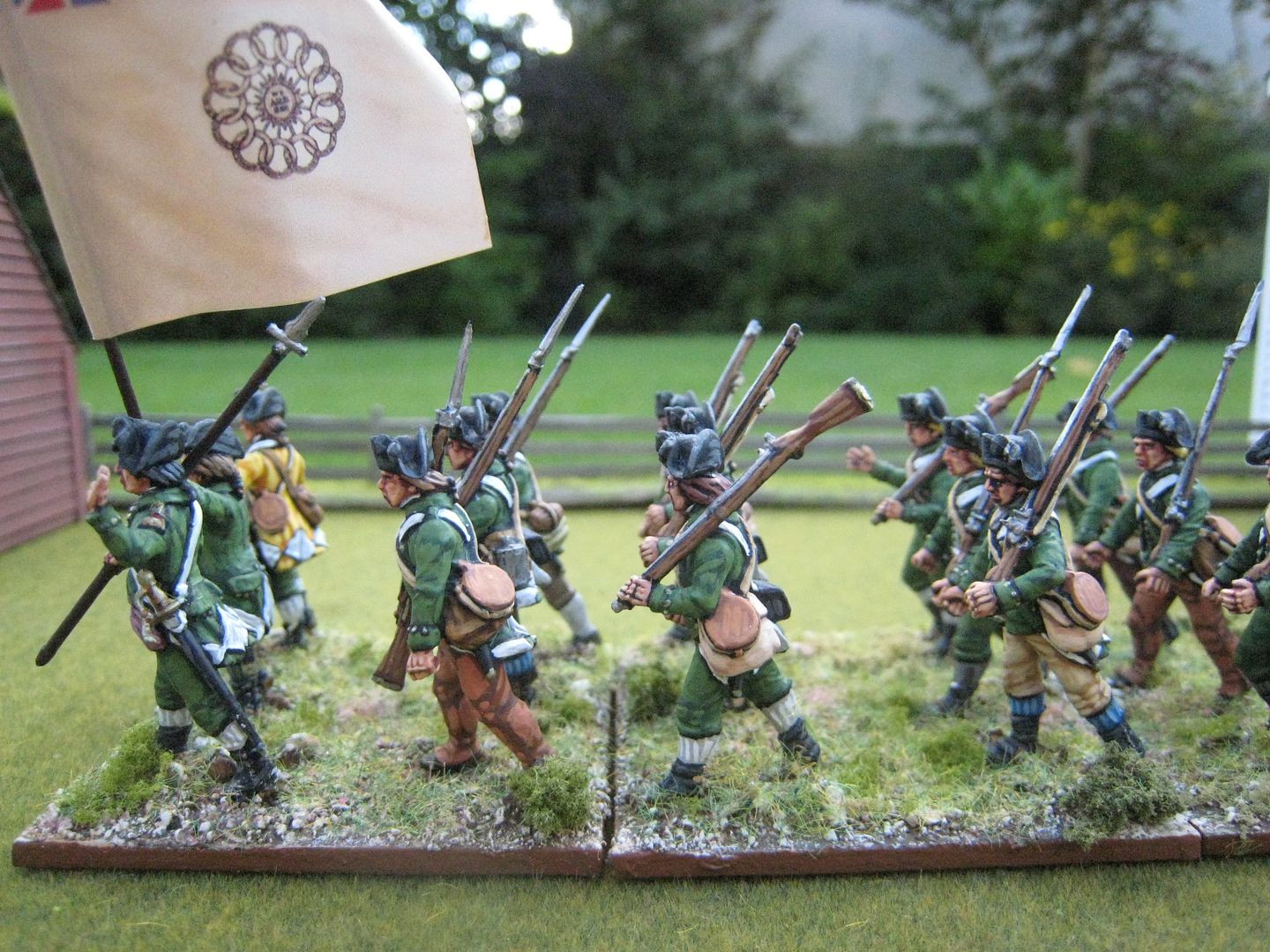My last two posts have been about loyalist units and I mentioned that I've been doing some thinking on how to build up the loyalist part of my collection. So I thought I'd set out my plans - this post might be useful to some people and I'd certainly appreciate thoughts and suggestions from others. Most AWI gamers will know the basis "rules of thumb" for loyalist uniforms. Many of the loyalist troops who were properly uniformed started out in green coats and then changed to red ones around 1777/78. The uniform coats probably didn't have button hole lace, although some of the larger units did in their "red coat" incarnations. For that reason, it's common for gamers to use "Continental" figures for loyalists rather than "British" ones. Many units seem to have worn round or slouch hats. Some of loyalist units adopted a light infantry-style of dress, with leggings or full gaiters and caps. Gaitered trousers/overalls seem to have been very popular, as opposed to breeches and half-gaiters.
With the figures currently available in 25mm you need to make a few compromises. For example, if you want 25mm infantry in unlaced coats and full gaiters, like the Don Troiani Prince of Wales Volunteers
here, then you're currently out of luck (I suppose you could use the Perry Hessian garrison troops, with a bit of conversion work). Ditto if you want cut-down uniform coats, Indian leggings and round hats, like the Don Troiani Jessup's Corps of Loyalists
here (you'd need to use Perry Saratoga figures and do some head swaps). However, if you want unlaced coats, overalls and slouch hats, like the Don Troiani King's American Regiment
here, then I think there are two ways to go at present: Perry plastic Continentals with hats from the British plastic set or the Fife & Drum British Guards figures (which don't have lace). The former option isn't ideal because only half the Perry plastic Continentals wear overalls. If you want figures that aren't in a marching pose, then it becomes more difficult and my solution is to use the Perry British plastics, even though they have lace. I'll also mention
King's Mountain Miniatures, as they have a massive range of separate heads which include several sets that are suitable for loyalists. A further option is to be mega-creative and mix up all kinds of metal figures, as Steve Jones did with his
South Carolina loyalists.
So the decisions I've made are within the contraints outlined above. I admit to not being particularly fussed about button hole lace - what's more important to me is the overall look of the unit and whether the head gear and poses suit the look I'm after. I've also tried to double-up some units to increase their use, and that usually requires further compromise on particular uniform details. The list isn't finite - for example, I've yet to decide what to do about Butler's Rangers and the infantry element of the Britih Legion. As usual, references to battles are to the 4 Caliver/"British Grenadier!" scenario books. Also worth a mention is Steve Jones' "Rebellion" supplement for the "Black Powder" rules, which contains an excellent section on loyalists and their uniforms.
First, there are the well-known units for which particular figures have been made by Perry.
- Queen's Rangers (Brandywine, Monmouth, Germantown, Whitemarsh, Springfield, Gloucester Point). 20 figures will see you through most scenarios.
- Volunteers of Ireland (Camden and Hobkirk's Hill).
Secondly, there are a number of other units which I propose to model with (largely) Perry Miniatures' plastic figures. These vary in size and follow the units involved in the scenarios. There's nothing wrong in my view with painting up 24 figures in green faced red coats, or red faced blue coats, and having them stand in as generic loyalists for each and every scenario. That would obviously save on money and painting time. But I'm rather anal when it comes to the AWI and I appear to have accumulated several boxes of Perry plastics, so I'm going to have a stab at painting up several units which try, insofar as is possible and practicable, to be reasonably close to what the units may have looked like. I haven't included "loyalist militia", which appear in a couple of scenarios (which I
painted up last year).
- green coats faced blue, tricornes: Emmerich's Chasseurs (Indian Field, Hudson Forts), Prince of Wales' Volunteers (Newport) - 12 figures; Perry plastic Continentals; see
here.
- green coats faced white, round hats: King's American Regiment early uniform (Hudson Forts, Newport) - 30 figures; Perry plastic British.
- green coats faced orange, tricornes: King's Orange Rangers (Hudson Forts) - 12 figures; Perry plastic British; see
here.
- green coats faced red with green lapels and slouch hats: King's Carolina Rangers (Savannah) - 8 figures; Perry plastic Continentals with British slouch hats.
- green coats faced red, tricornes and Saratoga caps for the light company: King's Royal Regiment of New York (Oriskany) - 28 figures; Perry plastic British.
- green coats faced red, slouch/round hats: Loyal American Regiment (Hudson Forts) - 16 figures; Perry plastic Continentals with a mix of British and American hats.
- red coats faced blue, white slouch hats: De Lancey's Regiment (Eutaw Springs; Savannah) - 18 figures; Perry plastic British.
- red coats faced blue, slouch hats: New York Volunteers (Hudson Forst, Hobkirk's Hill, Eutaw Springs), North Carolina Volunteers (Stono Ferry, Savannah, Camden) - 16 figures; Perry plastic British.
- red coats faced blue, tricornes: New Jersey Volunteers (Springfield) - 12 figures, Perry plastic British.
- red coats faced olive green, tricornes: King's American Regiment later uniform (Hobkirk's Hill) - 16 figures; Perry plastic British.
- red coats faced green, slouch/round hats: Queen's Loyal Rangers (Bennington) - 12 figures; Perry plastic Continentals with a mix of British and American hats and some metal militia.
- red coats faced yellow, slouch/round hats: South Carolina Royalists (Stono Ferry; Hobkirk's Hill) - 16 figures; Perry plastic Continentals with mix of British and American hats. [I might copy Steve and mix in a few metal militia types.]
I'm sure some will disagree with the above. For example, should the King's Royal Regiment of New York have red or blue facings? You can read a
discussion about that on the re-enacted unit's website. I decided to follow James Kochan and go with red, largely because I love the Don Troiani painting of the Battle of Oriskany which shows members of the regiment in light infantry caps and red facings. There's a fair amount of work to be done in painting up the units listed above. If I run out of plastics I might have to treat myself to some Fife & Drum Guards. I'm already working on the King's Carolina Rangers and next in line will be the New Jersey Volunteers.




















